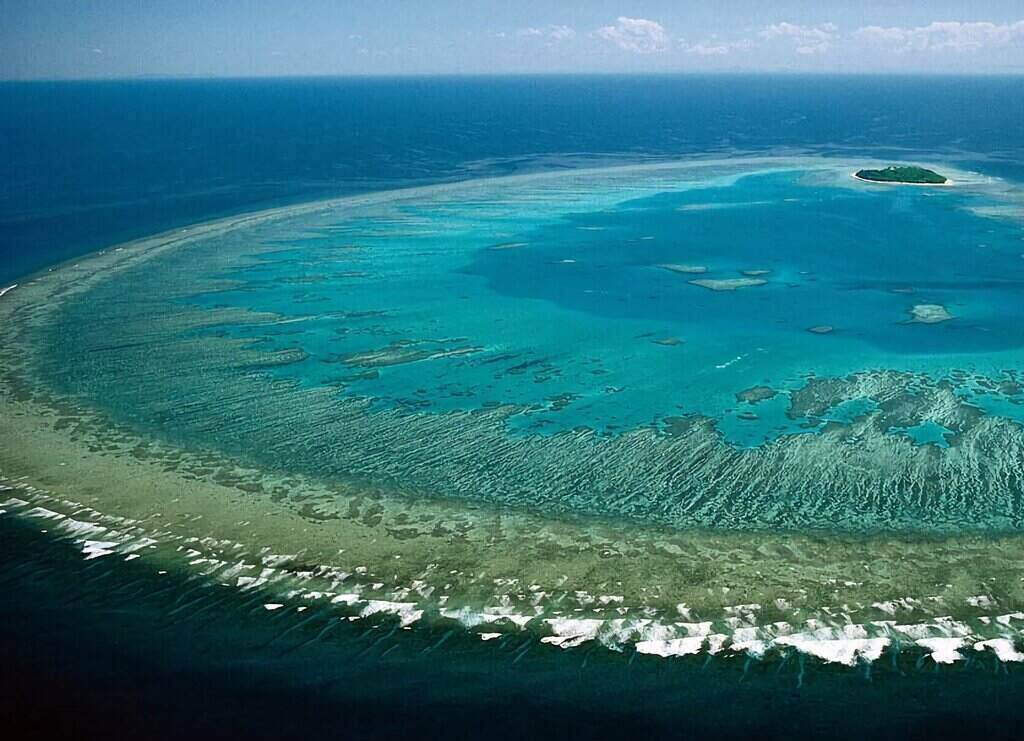Headlines
Great Barrier Reef Bleaching Is the Result of Climate Change

One of the world’s seven wonders is in danger due to climate change. Scientists confirmed the Great Barrier Reef (the Reef) experienced its sixth mass bleaching event in March. The post-summer Reef health summary report indicated that 91% of the coral surveyed this year show bleaching caused by above-average sea temperatures.
Climate change is the most significant threat to the Great Barrier Reef because it influences weather patterns and the ocean temperature, pH level, and currents while amplifying other threats. Unfortunately, climate change-related events continue to increase in frequency, which means shorter times between events for the coral to recover. “Even the most robust corals require nearly a decade to recover,” said Jodie Rummer, associate professor of Marine Biology at James Cook University.

Courtesy of csharker (Pixabay CC0)
The Great Barrier Reef Marine Park Authority (GBRMPA) and The Australian Institute of Marine Science (AIMS) announced that aerial surveys showed significant bleaching across the Reef. After viewing about 750 reefs, surveyors reported the most severe bleaching in the Reef’s northern and central areas.
David Wachenfeld, a chief scientist at the GBRMPA, said, “The early indications are that the mortality won’t be very high.” He and his colleagues are hopeful that most of the coral will recover from the current event.
Australia’s Summer 2021-22 Reef Snapshot, released in May, reported the Great Barrier Reef’s four key stressors were water temperature, cyclones, storms, flood plumes, and crown-of-thorns starfish outbreaks. In addition, it noted significant concern about above-average sea temperatures.
World Wildlife author explained that as the planet warms, so does the ocean. Therefore, a change in ocean temperature can cause a bleaching event. For example, as little as two degrees Fahrenheit “above the average maximum ocean temperature for four weeks can trigger coral bleaching and potentially death.”
When the ocean heats up, the coral is stressed and expels zooxanthellae, the microscopic algae that live in the coral’s tissues. The algae provide the coral with nutrients and are responsible for the coral’s bright, colorful appearance. As a result of the algae leaving, the color fades until the coral looks bleached. If the conditions do not improve, coral can starve and die. As its carbonate skeleton is exposed, the coral turns white.

Courtesy of Robert Waghorn (Pixabay CC0)
Rummer said the corals are not adapting to repeated bleaching events and marine heatwaves. Of the six known bleaching events, 1998, 2002, 2016, 2017, 2020, and 2022, those in 2016 and 2017 led to high levels of coral mortality. Two-thirds of the coral in the Great Barrier Reef was damaged in the bleaching events of 2016, 2017, and 2020.
Several reasons for concern: Once coral dies, reefs rarely come back. The coral reef’s complex architecture is home to an astonishing number of creatures. The Great Barrier Reef contributes more than $6 billion to Australia’s economy and provides 64,000 full-time jobs.
The 214,000 square mile marine park includes about 3,000 coral reefs with 600 types of hard and soft corals, over 100 types of jellyfish, thousands of varieties of mollusks, 500 species of worms, and over 1,600 types of fish. In addition, there are more than 30 species of whales and dolphins.
In March, United Nations representatives visited the Great Barrier Reef to determine if the reef’s World Heritage rating should be downgraded to “in danger” due to damages caused by climate change.
Written by Cathy Milne-Ware
Sources:
CNN: The Great Barrier Reef is suffering a sixth mass-bleaching event. Here’s why scientists are concerned; by Hillary Whiteman
New Atlas: Great Barrier Reef endures fourth coral bleaching event in seven years; by Nick Lavars
CNN: Great Barrier Reef suffers sixth mass bleaching event with 91% of reefs surveyed affected; by Hillary Whiteman, Hannah Ritchie, and Helen Regan
NPR: Australia says most Great Barrier Reef coral studied this year was bleached
GBRMPA: Great Barrier Reef Marine Park Authority, Australian Institute of Marine Science, and CSIRO 2022, Reef snapshot: Summer 2021-22, Great Barrier Reef Marine Park Authority, Townsville.
Featured Image Courtesy of Lock the Gate Alliance’s Flickr Page – Creative Commons License
First Inset Image Courtesy of csharker’s Pixabay Page – Creative Commons License
Second Inset Image Courtesy of Robert Waghorn’s Pixabay Page – Creative Commons License
